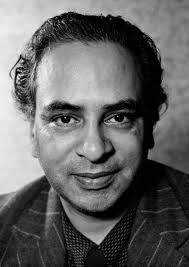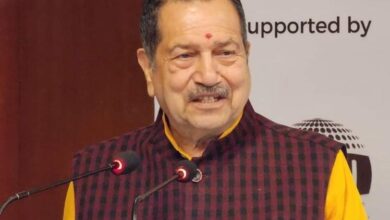Mulk Raj Anand Biography, Wikipedia, Personal Life, Career, Family, Net Worth
Mulk Raj Anand (December 12, 1905 – September 28, 2004) was a pioneering Indian writer in English, celebrated for his vivid portrayal of the lives of the marginalized and impoverished in traditional Indian society. As one of the first India-based authors to gain an international readership, alongside contemporaries like R.K. Narayan, Ahmad Ali, and Raja Rao, Anand is often hailed as a founding father of the Indian English novel.
His works, including the seminal novels Untouchable (1935) and Coolie (1936), are classics of modern Indian literature, noted for their social realism, empathetic depiction of the oppressed, and critique of casteism, poverty, and colonial exploitation. Anand’s literary career, spanning over seven decades, was deeply influenced by personal experiences, social injustices, and his commitment to humanistic ideals.
Profile
| Aspect | Details |
|---|---|
| Full Name | Mulk Raj Anand |
| Date of Birth | December 12, 1905 |
| Place of Birth | Peshawar, British India (now in Pakistan) |
| Date of Death | September 28, 2004 |
| Place of Death | Pune, Maharashtra, India |
| Nationality | Indian |
| Occupation | Novelist, Essayist, Art Critic |
| Education | University of Punjab, University College London, University of Cambridge |
| Literary Movement | Indian English Literature, Progressive Writers’ Movement |
| Notable Works | Untouchable (1935), Coolie (1936), Two Leaves and a Bud (1937) |
| Writing Themes | Social justice, caste discrimination, poverty, colonial rule |
| Awards & Honours | Padma Bhushan (1967), Sahitya Akademi Award |
| Legacy | Pioneer of Indian English literature; voice for the marginalized |
Early Life and Education
Mulk Raj Anand was born in Peshawar, British India (now in Pakistan), into a Hindu Khatri family. His father, Lal Chand, was a coppersmith who later became a head clerk in the Thirty-eighth Dogra Regiment, while his mother, Ishwar Kaur, came from a devout Sikh peasant family. Growing up in a traditional Punjabi household, Anand was exposed early to the rigidities of India’s caste system and religious divides, which profoundly shaped his worldview. A family tragedy the suicide of an aunt excommunicated for sharing a meal with a Muslim woman—ignited his passion for writing, leading to his first prose essay.
Anand’s father, an Arya Samaji, instilled in him a strong educational ambition. He attended cantonment schools and later Khalsa College, Amritsar, graduating with honors in English from Punjab University in 1924. During this period, Anand participated in the Non-Cooperation Movement, leading to a brief imprisonment, which fueled his anti-colonial sentiments. In 1925, he moved to England, working in restaurants to support himself while studying at University College London. He earned a Ph.D. in philosophy from Cambridge University in 1929, with a dissertation on Bertrand Russell and the English empiricists. In London, Anand forged friendships with the Bloomsbury Group, including E.M. Forster, who later wrote the introduction to Untouchable.

Mulk Raj Anand Personal Life
Anand’s personal life was marked by deep relationships and a commitment to social causes. In 1938, he married Kathleen Van Gelder, an English actress and communist, with whom he had a daughter, Susheela. The marriage ended in divorce in 1948. In 1950, Anand married Shirin Vajifdar, a Parsi classical dancer and choreographer from Bombay, who remained his partner until his death. Anand was known for his love of animals, particularly his pet dog, and had a passion for traditional Indian art forms, often incorporating elements of classical music and dance into his storytelling. He was also a talented painter, creating abstract works in his spare time.
Anand’s experiences with social injustices, including his unrequited love for a married Muslim woman and the ostracism faced by his aunt, deeply influenced his writing. These incidents, coupled with his exposure to the caste system’s cruelties, drove his lifelong advocacy for social justice and equality.
Mulk Raj Anand Career
Anand’s literary career began in England, where he published reviews in T.S. Eliot’s magazine Criterion. His first novel, Untouchable (1935), a chilling exposé of a day in the life of Bakha, a young sweeper from the lowest caste, brought him international acclaim. Praised by E.M. Forster for its directness, the novel incorporated Punjabi and Hindustani idioms into English, earning Anand the moniker “India’s Charles Dickens.” Coolie (1936) followed, depicting the exploitation of Munoo, a 14-year-old laborer, and highlighting universal themes of human suffering. Other notable novels include Two Leaves and a Bud (1937), The Village (1939), Across the Black Waters (1939), The Sword and the Sickle (1942), and The Private Life of an Indian Prince (1953).
Anand’s works were not limited to novels. He wrote short stories, essays, and autobiographies, including the seven-part Seven Ages of Man series, of which Seven Summers (1951) and Morning Face (1968) are notable. Morning Face won the Sahitya Akademi Award. He founded the literary magazine Marg in 1946, which set high standards in art criticism, and served as editor until 1981. Anand also contributed \nworked as a broadcaster and scriptwriter for the BBC in London during World War II, taught at various universities, and served as Tagore Professor of Literature and Fine Art at the University of Punjab and chairman of the Lalit Kala Akademi.
Anand was a staunch Marxist and Gandhian, actively participating in India’s independence movement and supporting global freedom movements, including the Spanish Civil War. He co-founded the Progressive Writers’ Association, advocating for social justice through literature. His writings consistently addressed social inequalities, casteism, and colonialism, aiming to uplift the downtrodden.
Mulk Raj Anand Family
Anand was the third of five children born to Lal Chand and Ishwar Kaur. His father’s background as a coppersmith and soldier and his mother’s religious Sikh heritage influenced his upbringing. His daughter, Susheela, was from his first marriage to Kathleen Van Gelder. His second wife, Shirin Vajifdar, was a significant figure in his life, sharing his passion for Indian culture. Anand’s family tragedies, particularly his aunt’s suicide and his cousin Kaushalya’s death, profoundly shaped his literary focus on social reform.
Mulk Raj Anand Net Worth
Estimates of Mulk Raj Anand’s net worth vary, with some sources suggesting a range of $1 million to $2 million at the time of his death in 2004. His wealth primarily stemmed from his extensive literary output, including novels, short stories, essays, and editorial work with Marg. Additional income came from his roles as a broadcaster, scriptwriter, and university professor. However, Anand’s focus on social justice and his modest lifestyle suggest he prioritized his art and activism over financial gain.
READ ALSO: Bhagat Singh Biography, Wikipedia, Career, Family, Personal Life, Net Worth, Death
FAQs
Who was Mulk Raj Anand?
Mulk Raj Anand was a pioneering Indian writer in English, known for his realistic depiction of the lives of the poor and marginalized in India. He is considered a founder of the Indian English novel, with notable works like Untouchable and Coolie.
What are Mulk Raj Anand’s most famous works?
His most famous works include Untouchable (1935), Coolie (1936), Two Leaves and a Bud (1937), The Village (1939), and the autobiographical Morning Face (1968), which won the Sahitya Akademi Award.
What themes did Mulk Raj Anand explore in his writings?
Anand’s works focused on social inequality, caste discrimination, poverty, colonialism, and the struggles of the oppressed, often using social realism to critique Indian society.
What was Mulk Raj Anand’s role in Indian literature?
He laid the foundation for Indian English fiction, bringing rural and marginalized experiences to a global audience. He is often called the “Father of Indian English Literature” for his pioneering contributions.
Did Mulk Raj Anand receive any awards?
Yes, he received the Padma Bhushan (1967), the Sahitya Akademi Award for Morning Face (1968), the International Peace Prize, and the Leverhulme Fellowship, among others.
What was Mulk Raj Anand’s personal life like?
Anand married Kathleen Van Gelder (1938–1948), with whom he had a daughter, Susheela, and later married Shirin Vajifdar in 1950. He was passionate about animals, Indian art, and social justice.
How did Mulk Raj Anand contribute to social reform?
Through his writings, Anand highlighted casteism, classism, and colonial exploitation, advocating for social justice. He co-founded the Progressive Writers’ Association and supported India’s independence movement.



